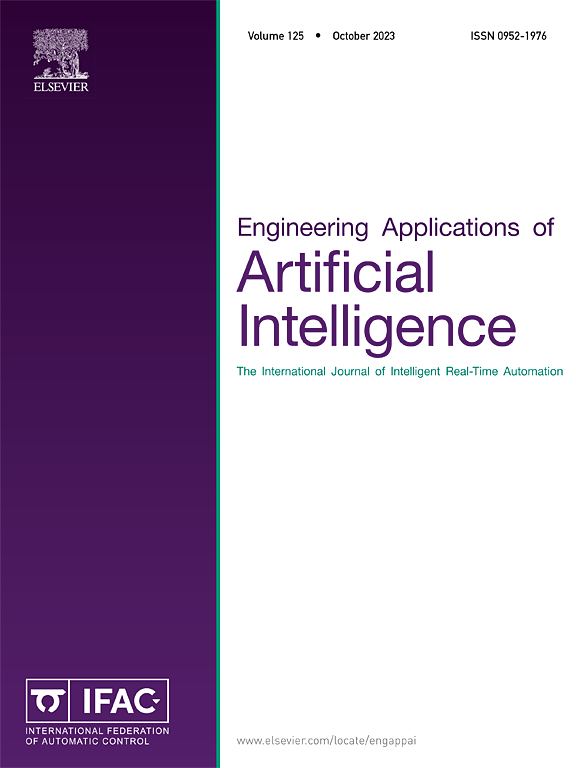A Transformer-based self-supervised learning model for fault diagnosis of air-conditioning systems with limited labeled data
IF 7.5
2区 计算机科学
Q1 AUTOMATION & CONTROL SYSTEMS
Engineering Applications of Artificial Intelligence
Pub Date : 2025-02-20
DOI:10.1016/j.engappai.2025.110331
引用次数: 0
Abstract
Despite the great successes of supervised learning-based fault diagnosis techniques for heating, ventilation and air-conditioning (HVAC) systems, their applications are severely limited due to insufficient labeled data accompanied with massive unlabeled data. To address this drawback, a Transformer-based self-supervised representation learning model (TSSRL) is proposed in this study for HVAC fault diagnosis with limited labeled data. Specifically, a customized Transformer model is developed as the feature encoder by embedding a context-attention module on the self-attention module, which enables TSSRL to mine the contextual representations among input data. In addition, a joint data augmentation strategy is designed to improve the diversity of inputs, promoting the pretext tasks to learn more extensive representations from unlabeled data. Meanwhile, two cooperative pretext tasks, namely contrastive similarity matching and data reconstruction, are formulated to extract discriminative representations from unlabeled data. The diagnosis-beneficial representations learned from unlabeled data are used for downstream classification modeling tasks with limited labeled data. Experiments on two benchmark HVAC fault datasets demonstrate the superiority of the proposed TSSRL model over other state-of-the-art HVAC fault diagnosis methods.
求助全文
约1分钟内获得全文
求助全文
来源期刊

Engineering Applications of Artificial Intelligence
工程技术-工程:电子与电气
CiteScore
9.60
自引率
10.00%
发文量
505
审稿时长
68 days
期刊介绍:
Artificial Intelligence (AI) is pivotal in driving the fourth industrial revolution, witnessing remarkable advancements across various machine learning methodologies. AI techniques have become indispensable tools for practicing engineers, enabling them to tackle previously insurmountable challenges. Engineering Applications of Artificial Intelligence serves as a global platform for the swift dissemination of research elucidating the practical application of AI methods across all engineering disciplines. Submitted papers are expected to present novel aspects of AI utilized in real-world engineering applications, validated using publicly available datasets to ensure the replicability of research outcomes. Join us in exploring the transformative potential of AI in engineering.
 求助内容:
求助内容: 应助结果提醒方式:
应助结果提醒方式:


